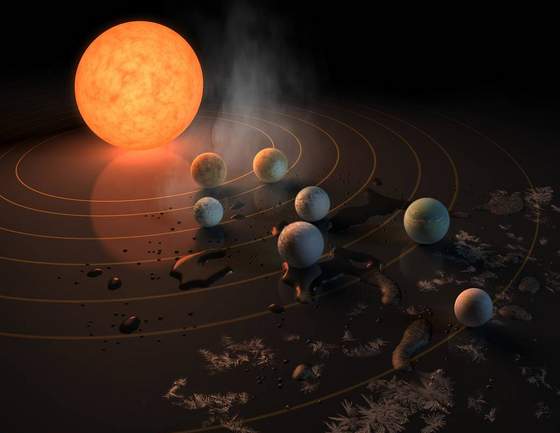The chemical nitrous oxide, or laughing gas, may be a biosignature of life, according to astrobiologists. Chemical compounds in a planet’s atmosphere that could indicate life, called biosignatures, typically include gases found in abundance in Earth’s atmosphere today.
This conclusion, and the modeling work that led to it, are detailed in an article published today in the Astrophysical Journal.
To reach it, the researchers determined how much nitrous oxide living things on a planet similar to Earth could possibly produce. They then made models simulating that planet around different kinds of stars and determined amounts of N2O that could be detected by an observatory like the James Webb Space Telescope.
Life in the TRAPPIST-1 System?
The star system called TRAPPIST-1 may be a good candidate because it is near to earth and the rocky planets have atmospheres that could potentially have nitrous oxide.
There are multiple ways that living things can create nitrous oxide, or N2O. Microorganisms are constantly transforming other nitrogen compounds into N2O, a metabolic process that can yield useful cellular energy.
Life generates nitrogen waste products that are converted by some microorganisms into nitrates. Under the right conditions in the ocean, certain bacteria can convert those nitrates into nitrous oxide, which then leaks into the atmosphere.
Under certain circumstances, N2O could be detected in an atmosphere and still not indicate life. The researchers accounted for this in their modeling. A small amount of nitrous oxide is created by lightning, for example. But alongside N2O, lightning also creates nitrogen dioxide, which would offer astrobiologists a clue that non-living weather or geological processes created the gas.
Is N2O Easily Detected?
Others who have considered N2O as a biosignature gas often conclude it would be difficult to detect from so far away. The researchers think that this conclusion is based on N2O concentrations in Earth’s atmosphere today. Because there isn’t a lot of it on this planet, which is teeming with life, some believe it would also be hard to detect elsewhere.
The researchers also indicated that common stars like K and M dwarfs produce a light spectrum that is less effective at breaking up the N2O molecule than our sun is. These two effects combined could greatly increase the predicted amount of this biosignature gas on an inhabited world.
The researchers believe now is the time for astrobiologists to consider alternative biosignature gases like N2O because the James Webb telescope may soon be sending information about the atmospheres of rocky, Earth-like planets in the TRAPPIST-1 system.

This article is based on the press release from the University of California, Riverside. Content may be edited.